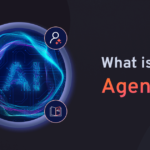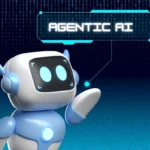
Introduction
Artificial intelligence has evolved rapidly over the past decade. From basic rule-based systems to machine learning and generative AI, the technology has continuously expanded its capabilities. Recently, agentic AI—AI that can plan, act, and make decisions autonomously—has emerged as a groundbreaking step forward. Yet, as powerful as agentic AI is, it still has limitations in dealing with complex, high-stakes, and ambiguous scenarios.
The next big leap in AI is interpretive AI—a paradigm designed to combine the creative and generative capabilities of large AI models with structured reasoning, domain expertise, and contextual awareness. In this blog, we’ll explore what interpretive AI is, why it matters, how it might shape our future, and what lies beyond it.
1. From Agentic AI to Interpretive AI
Agentic AI focuses on autonomous decision-making and task execution without constant human supervision. While this has led to major breakthroughs—such as AI-driven research assistants, automated coding tools, and dynamic customer service bots—it still struggles in areas requiring nuanced judgment, ethical consideration, and multi-modal reasoning.
Interpretive AI takes the baton from agentic AI and runs further. Instead of just “acting” based on goals, it interprets complex situations, applies logical reasoning, integrates diverse data types, and makes decisions with greater reliability. This marks a shift from action-oriented intelligence to interpretation-oriented intelligence.
2. What is Interpretive AI?
At its core, interpretive AI merges the creative power of generative AI with the precision of symbolic reasoning systems. Imagine an AI that not only generates possible solutions but also understands their implications, evaluates them against context, and explains why it chose one over the others.
For example:
- In healthcare, interpretive AI could analyze patient histories, lab results, and doctor’s notes, then suggest treatments along with reasoning based on medical guidelines.
- In project management, it could evaluate multiple strategies, predict outcomes, and recommend the most efficient path while justifying its choice.
This makes AI ideal for domains where human-like judgment, transparency, and accountability are essential.
3. Why Interpretive AI Matters Now
We live in an era where decisions increasingly rely on AI systems, from approving loans to detecting fraud to managing supply chains. However, many current models work like black boxes—they produce answers without explaining their reasoning.
This AI addresses this gap. By combining interpretability with autonomy, it offers:
- Transparency: Clear explanations for each decision.
- Context Awareness: Adapting responses based on the full picture, not isolated data points.
- Reduced Risk: Lower chance of costly or dangerous errors in sensitive areas like medicine, law, or finance.
With industries demanding trustworthy AI, interpretive AI is poised to become the next standard.
4. Artificial Wisdom and Interpretive AI
One of the most exciting concepts tied to interpretive AI is artificial wisdom—the idea that AI can integrate moral reasoning, empathy, and ethical principles into decision-making.
While agentic AI focuses on achieving goals efficiently, artificial wisdom emphasizes how those goals are achieved. By embedding ethical reasoning into its processes, This AI could make decisions that are not only effective but also fair and aligned with human values.
For example, an interpretive AI legal assistant could recommend strategies that maximize a client’s interests while adhering to legal ethics and social responsibility.
5. Embodiment: Where Interpretive AI Meets Physical Systems
The future isn’t just about software—it’s about AI moving into the physical world. When interpretive AI is integrated into embodied AI systems, the possibilities multiply.
Think about:
- Autonomous factories that can adjust production lines intelligently when supply shortages occur.
- Exoskeletons for rehabilitation that adapt to a patient’s specific recovery patterns.
- Smart hospitals where robots make patient care decisions in coordination with human doctors.
By combining reasoning and physical interaction, interpretive AI can drive real-world systems with unprecedented adaptability.
6. Continuous Learning Meets Interpretive AI
AI systems often require retraining to adapt to new situations. Continual Learning AI aims to change that by enabling models to learn and update in real time without forgetting old knowledge.
When combined with interpretive AI, continual learning creates systems that can:
- Interpret new scenarios instantly.
- Retain lessons from past experiences.
- Improve decision-making dynamically.
This combination could make AI far more resilient and relevant in fast-changing environments like cybersecurity or financial markets.
7. Human-Centered Design & Collaboration
As AI becomes more advanced, the need for human-centered AI grows. This AI can be designed to work collaboratively with humans, respecting human judgment and values while enhancing efficiency.
For example:
- In education, interpretive AI tutors could adapt teaching styles to each student’s learning pace while ensuring emotional engagement.
- In corporate strategy, it could help executives explore scenarios without replacing their role in final decision-making.
This collaborative model ensures AI remains a partner, not a replacement.
8. Challenges Ahead for Interpretive AI
Despite its promise, interpretive AI faces several challenges:
- Complex Integration: Merging generative, symbolic, and contextual AI in a scalable way is technically demanding.
- Bias & Fairness: Interpretability doesn’t eliminate the risk of bias—data quality still matters.
- Regulation & Ethics: Transparent decision-making is key, but oversight will be needed to ensure accountability.
Addressing these challenges will be crucial for broad adoption.
9. What’s Coming Next: ASI and Beyond
Beyond This AI, the horizon points toward Artificial Superintelligence (ASI)—AI capable of improving itself without human intervention, potentially surpassing human-level cognition.
While ASI is still theoretical, its development could be accelerated by interpretive AI systems that understand and refine their own reasoning processes. However, this leap will require even stricter ethical guidelines and governance.
Conclusion
The leap from agentic AI to interpretive AI is more than just a technological upgrade—it’s a philosophical shift. By blending creative generation, logical reasoning, and ethical understanding, interpretive AI could redefine how we interact with machines and how machines interact with our world.
From transparent healthcare diagnostics to adaptive industrial systems, interpretive AI promises a future where AI is not just capable but also comprehensible, reliable, and aligned with human values. The road ahead is challenging, but if done right, it could be the bridge to a truly intelligent future.









Love the human values